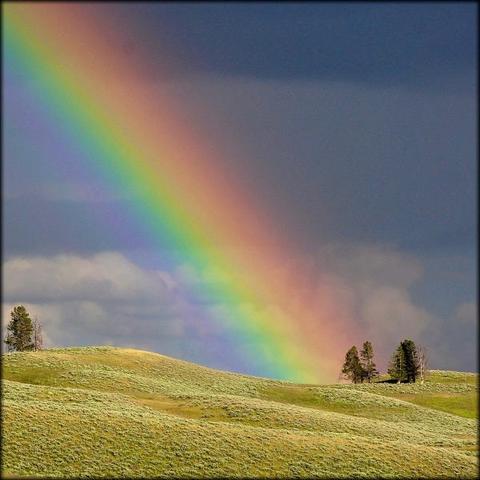Played around a little bit with #numpy and #matplotlib in #python to create a #cyberpunk #voxelart avatar featuring a #c64 #geos disk icon. #procrastination
Recent searches
Search options
#numpy
PostgreSQL Shared Libraries: Solving Python Extension Library Path Issues
Smoothly integrate Python extensions with PostgreSQL Shared Libraries, especially when using NumPy. Properly configuring the `shared_libraries` parameter prevents runtime errors by ensuring your database server can locate necessary libraries. Learn how to manage PostgreSQL Shared Libraries for robust Python extensions! #PostgreSQL #Python #SharedLibraries #NumPy #Database #Extensions
https://tech-champion.com/databas...
Connaissez-vous l'histoire du mec qui ne sait pas programmer mais qui décide dans un moment de passion qu'il va implémenter un truc avec des vraies mathématiques (genre il y a des divisions et tout) en #python ?
Le même gars qui après une demi journée de rage et larmes pose une question tellement spécifique au moteur de recherche qu'il tombe sur l'implémentation déjà existante fournie par #numpy.
C'est à emporter, c'est pour un ami, moi je suis végétarien.
Exciting Python-Blosc2 Update!
In 3.2.1 release, we've implemented the __array_interface__ protocol for our array containers, dramatically expanding interoperability with NumPy, CuPy and other array libraries.
This means our blosc2.jit decorator now works with virtually all NumPy functions! Compute with the full power of NumPy with either decompressed data... or compressed data without decompressing first.
Check out examples: https://github.com/Blosc/python-blosc2/blob/main/examples/ndarray/jit-numpy-funcs.py
Code at: https://github.com/villares/sketch-a-day/tree/main/2025/sketch_2025_03_21
More sketch-a-day: https://abav.lugaralgum.com/sketch-a-day
If you like this, support my work, donate at:
https://www.paypal.com/donate/?hosted_button_id=5B4MZ78C9J724
https://liberapay.com/Villares
https://wise.com/pay/me/alexandrev562If you like this, support my work: https://www.paypal.com/donate/?hosted_button_id=5B4MZ78C9J724
It could be a T-shirt :)
Code at: https://github.com/villares/sketch-a-day/tree/main/2025/sketch_2025_03_20
Update: I added the Y axis flip :)
More sketch-a-day: https://abav.lugaralgum.com/sketch-a-day
If you like this, support my work, donate at: https://www.paypal.com/donate/?hosted_button_id=5B4MZ78C9J724
https://liberapay.com/Villares
https://wise.com/pay/me/alexandrev562
#Processing #Python #py5 #numpy #shapely #trimesh #STL #3Dprinting
#CreativeCoding
Unlocking the Power of NumPy: A Developer's Guide to Data Representation
NumPy stands as the cornerstone of data manipulation and analysis in Python, pivotal for machine learning and scientific computing. This article delves into its capabilities, from creating arrays to a...
https://news.lavx.hu/article/unlocking-the-power-of-numpy-a-developer-s-guide-to-data-representation
Working on core array computing libraries that power #scientificPython? #EuroSciPy2025 wants your proposals on optimized array operations, vectorization techniques, and numerical foundations. Submit your groundbreaking work!
@stevenaleach In #Python you really need to use #numpy at the very least ... or learn #Rustlang and rewrite it just as you did.
Unlocking the World of Digital Signal Processing with DSPylab
Dive into the innovative realm of DSPylab, a Python-based educational playground that empowers developers and learners to explore digital signal processing algorithms. With tools like NumPy and Matplo...
https://news.lavx.hu/article/unlocking-the-world-of-digital-signal-processing-with-dspylab
Oh look, a rainbow! Exploring the Visible Spectrum with Python Part 1
In this article I write Python code to calculate the frequencies, wavelengths, energies and RGB values of light across the visible spectrum. (Next week in Part 2 I plot the data using Matplotlib.)
#python #pythonprogramming #physics #numpy #matplotlib #light #spectrum
https://codedrome.substack.com/p/visible-spectrum-python

Demo of raster clipping/masking with #py5 and #numpy. Code at: https://github.com/villares/sketch-a-day/tree/main/2025/sketch_2025_03_05
More sketch-a-day: https://abav.lugaralgum.com/sketch-a-day
If you like this, support my work: https://www.paypal.com/donate/?hosted_button_id=5B4MZ78C9J724 #Processing #Python #py5 #CreativeCoding
The #python #numpy .npy format error messages assume the reader is the API user, not someone using a third-party package calling the API.
LIke, if my user sees "we only support format version..." , how do they know it's NumPy and not me?
Or, if you read a pickled npy file even though I explicitly set allow_pickle=False, the message is "If you trust the file you can load it unsafely using the `allow_pickle=`".
I rewrite some of the messages (which change pretty often) for clarity.
Interested in #MPI and #OpenMP parallel programming to speed up your scientific applications written in #C, #Cpp, #Fortran or #Python (with #numpy)?
Attend our course in #Mainz at the Johannes Gutenberg University (#JGU) for a 4-day course from 1. April to 4. April 2025! We still have plenty of space available!
See our announcement page for further details and to register: https://indico.zdv.uni-mainz.de/event/34/
Note, it is an on-site course.

I don't understand the interpolation step of #perlin #noise generation.
I have gradient vectors at the grid points. I have points inside each grid square.
If I call the gradient vectors unit vectors, then the dot product of a gradient vector with a point-position vector is already scaled by distance. It will also be scaled by distance from the other corners.
Is that not already interpolated?
NumPy Structured Arrays: Troubleshooting Data Type Issues in Python
Master NumPy Structured Arrays: Learn best practices & troubleshooting tips for defining & using them effectively in your data science projects. #NumPy #StructuredArrays #DataScience #Python #Programming #NumPyTutorial
https://tech-champion.com/programming/python-programming/numpy-structured-arrays-troubleshooting-data-type-issues-in-python/
Unlocking Time Series Analysis: The Evolution of STUMPY with Sean Law
Discover how Sean Law transformed time series data analysis with STUMPY, a cutting-edge Python library. Dive into the technical intricacies of its latest release and explore the impact of open source ...
https://news.lavx.hu/article/unlocking-time-series-analysis-the-evolution-of-stumpy-with-sean-law
Code at: https://github.com/villares/sketch-a-day/tree/main/2025/sketch_2025_02_18
More sketch-a-day: https://abav.lugaralgum.com/sketch-a-day
If you like this, support my work: https://www.paypal.com/donate/?hosted_button_id=5B4MZ78C9J724
#scipy #numpy #Processing #Python #py5 #CreativeCoding
II've heard of Perlin #noise before but never dug into it.
Yesterday I wanted it for a project and found some #python code for it (#numpy apparently doesn't supply Perlin natively...?)
The code works, but it isn't at all clear what the arguments mean or how I'd use it for the project I want.
So *obviously* now I am making my own that makes more sense to me. And also supports multiple octaves.
I mean...it's a day off. What else am I going to do?




